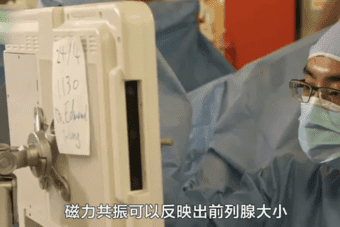Current Status of Prostate Issues
Prostate problems are primarily caused by benign prostatic hyperplasia (BPH), commonly known as prostate enlargement. This condition is frequently observed in men aged 40 and above. According to statistics released by the Hong Kong Department of Health, more than half of men over the age of 60 suffer from BPH, and the prevalence rises to 90% among men aged 80 and above—highlighting how widespread the condition is.
Functions of the Prostate (Also Known as the Prostatic Gland)
The prostate is a male-specific gland located just below the bladder, surrounding the urethra. Though small in size, it plays a vital role in male reproductive and urinary health:
- Seminal Fluid Production: The prostate secretes prostatic fluid, which makes up approximately 15–30% of the total volume of semen. This fluid nourishes sperm and helps them survive in the acidic environment of the vagina, maintaining their vitality.
- Ejaculation Support: Muscle contractions in the prostate assist in propelling semen out of the body during ejaculation.
- Urine Flow Control: Positioned at the bladder outlet, the prostate helps regulate urine flow and prevents leakage.
What Is Prostate Enlargement?
The prostate is a male reproductive gland responsible for producing fluid that mixes with sperm to form semen. When the glandular tissue undergoes non-cancerous growth, it is referred to as benign prostatic hyperplasia (BPH), or prostate enlargement.
Since the prostate is located beneath the bladder and surrounds the urethra, any swelling of the gland can compress the urethra, leading to a range of lower urinary tract symptoms. Men of all ages may experience prostate-related issues.
Symptoms of Prostate Conditions
In the early stages of prostate enlargement, various lower urinary tract symptoms often appear, such as frequent urination and nighttime urination. If the condition persists or worsens, it may lead to difficulty urinating, blood in the urine, or even complete inability to urinate.
More serious complications can include urinary tract infections, bladder stones, and impaired bladder or kidney function.
Even in the absence of symptoms, the American Urological Association recommends that men aged 55 and above consider regular prostate screenings.
Causes of Prostate Conditions
Benign prostatic hyperplasia (BPH) is primarily associated with aging. However, other factors such as obesity, psychological stress, depression, excessive alcohol consumption, smoking, certain medications, dietary habits, and hygiene may also contribute to prostate issues.
Risk Factors for Prostate Conditions
- Aging
- Smoking
- Excessive consumption of alcohol
- Obesity
How is prostate enlargement diagnosed?
|
Clinical Diagnosis |
If an urologist suspects a patient has prostate issues, they will first use the International Prostate Symptom Score (IPSS) questionnaire to understand the patient’s background, medical history, and lifestyle, followed by a digital rectal examination for a preliminary assessment. |
|
Urine Test |
The patient's urine sample is examined under a microscope to check for signs of inflammation or bacterial infection. This is followed by an uroflowmetry test*, which measures the bladder's storage capacity and the speed of urination to assess whether there is any urethral obstruction. Next, a bladder scan is performed using ultrasound to measure the amount of residual urine remaining in the bladder after urination. |
|
Prostate-Specific Antigen (PSA) Test |
If an urologist suspects that a patient may have prostate cancer, they may recommend this test to provide an initial assessment of the cancer risk. |
*
Uroflowmetry is a common procedure in urology. Nurses will guide participants on how to perform the test, which is conducted in a designated uroflowmetry room on the first floor of our clinic. During the test, participants urinate normally into a specialized funnel-shaped device that automatically collects data and measures various parameters, including average and maximum urine flow rate, total voided volume, voiding time, time to reach peak flow, and residual urine volume.
Upon completion, a graphical report will be generated. After the test, medical staff will use an ultrasound device to measure any remaining urine in the bladder, assisting the physician in making a diagnosis.
:When Should You Seek Medical Attention?
If you experience any of the following urinary symptoms, it is recommended to seek medical advice promptly for a professional diagnosis:
- Frequent urination: Needing to urinate often during the day or night (nocturia)
- Urgency: A sudden, intense urge to urinate that is difficult to control
- Weak urine stream: A slow or weak flow of urine, with prolonged voiding time
- Difficulty urinating: Straining to initiate urination or feeling that the bladder is not fully emptied afterward
- Dribbling: Continued leakage of urine after finishing urination
- Hematuria: Presence of blood in the urine
These symptoms may be signs of benign prostatic hyperplasia (BPH), or they could be related to more serious conditions such as prostate cancer or bladder stones. They should not be ignored. If you notice any urinary tract symptoms or wish to learn more about prostate health, please contact our professional team—we’re here to help.
Risk Factors for Prostate Conditions
The exact cause of benign prostatic hyperplasia (BPH) remains unclear, but the following factors are believed to increase the risk:
- Age: Age is the most significant risk factor. As men grow older, prostate tissue naturally enlarges.
- Hormonal changes: Fluctuations in male hormones—especially testosterone—are thought to be associated with prostate enlargement.
- Family history: If your immediate relatives (such as your father or brothers) have BPH, your risk of developing the condition is higher.
- Lifestyle habits: Obesity, lack of physical activity, and a high-fat diet may also contribute to the development of BPH.
Treatment Options for Benign Prostatic Hyperplasia (BPH)
If symptoms such as frequent urination or difficulty urinating are mild, appropriate treatment can significantly alleviate the condition.
|
Regular Monitoring and Medication |
If symptoms are mild, patients may consider improving and relieving lower urinary tract discomfort—such as urinary obstruction—through lifestyle changes, medication that relaxes the urethra or reduces prostate size, and regular follow-up appointments. |
|
Transurethral Resection of the Prostate (TURP) |
A thin endoscope equipped with a metal loop is inserted through the urethral opening to remove the enlarged prostate tissue, thereby relieving lower urinary tract symptoms. This minimally invasive procedure offers the advantage of low blood loss, typically takes about 1 to 2 hours, and patients can usually be discharged within 3 to 5 days. |
|
Water Vapor Therapy (Rezūm) |
Another minimally invasive option is water vapor therapy, where a small tube is inserted through the urethra to the prostate, and sterile steam is injected to destroy enlarged prostate tissue, removing obstructions to the urethra. The procedure requires only mild sedation and can be completed within 15 minutes. Patients are usually discharged on the same day. |
| Prostatic Urethral Lift (UroLift)
|
If the enlarged prostate tissue is not too large and does not protrude into the bladder, a prostatic urethral lift is a minimally invasive approach that may be considered. In this procedure, the doctor inserts a special device through the urethra to access the prostate. Small implants are then placed to lift and hold the enlarged prostate tissue away from the urethra, thereby increasing the opening of the urethra. The procedure usually lasts about 30 minutes, and is effective in alleviating various urinary symptoms. Patients are generally able to urinate normally almost immediately. Side effects are minimal, and patients are usually discharged on the same day. |
Possible Complications of Prostate Enlargement
If prostate enlargement is not properly treated, persistent urethral obstruction may lead to serious complications.
- Urinary retention: The bladder cannot fully empty, causing urine to accumulate, which may result in acute or chronic urinary retention.
- Urinary tract infections: Residual urine in the bladder can foster bacterial growth, leading to infections such as urethritis or cystitis.
- Bladder stones: Minerals in the urine may precipitate and crystallize in the bladder, forming stones that worsen urination difficulties and discomfort.
- Kidney damage: Long-term urine backflow can put pressure on the kidneys, potentially causing hydronephrosis or impairing kidney function.
Methods to Prevent Prostate Enlargement
While it is not possible to completely prevent the natural growth of the prostate, lifestyle changes can effectively reduce the risk of developing the condition and delay the worsening of symptoms.
- Maintain a healthy weight: Control body weight to avoid obesity.
- Balanced diet: Eat more vegetables, fruits, and fiber, while reducing high-fat and high-cholesterol foods. Research indicates that foods rich in lycopene (e.g., tomatoes) and pumpkin seeds are beneficial for prostate health.
- Regular exercise: Moderate exercise helps maintain bodily functions and hormonal balance.
- Timely urination: Avoid holding urine and empty the bladder promptly when the urge arises.
- Reduce caffeine and alcohol intake: Caffeine and alcohol can irritate the bladder, worsening symptoms of frequent urination and urgency.
FAQ
Does Prostate Enlargement Cause Prostate Cancer?
No. Prostate enlargement and prostate cancer are two entirely different conditions. Prostate enlargement is a benign condition, while prostate cancer is a malignant tumor. Although they may coexist, prostate enlargement itself does not develop into prostate cancer. However, since their symptoms can be similar, it is recommended to seek medical attention early for a differential diagnosis.
Is a Special Diet Required for Prostate Enlargement?
A strict diet is not necessary, but attention to food choices is recommended to alleviate symptoms. It is advised to reduce the intake of the following foods:
- Alcohol and caffeine: These substances have a diuretic effect, irritating the bladder and worsening urinary frequency and urgency.
- Spicy and irritating foods: Foods like chili peppers and mustard may irritate the prostate, exacerbating symptoms.
Conversely, consuming foods rich in zinc (e.g., seafood, nuts), lycopene-rich foods (e.g., tomatoes, watermelon), and pumpkin seeds can help maintain prostate health.
Is Surgery Always Necessary for Prostate Enlargement?
Not necessarily. Treatment depends on the severity of symptoms. Mild symptoms can be managed through lifestyle changes and medication. If symptoms significantly affect quality of life or cause complications (e.g., urinary retention), a doctor may recommend surgical treatment.
Are prostatitis and benign prostatic hyperplasia (BPH) the same?
No, they are different. Prostatitis is typically caused by bacterial infection and inflammation, commonly affecting younger men, with symptoms like perineal pain and burning during urination. Benign prostatic hyperplasia (BPH) is a non-cancerous enlargement of the prostate, mainly affecting older men, with symptoms primarily related to difficulty urinating.





















